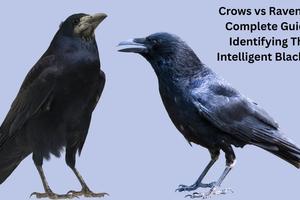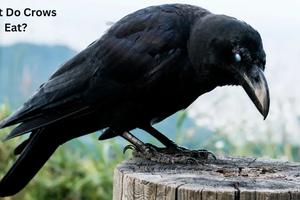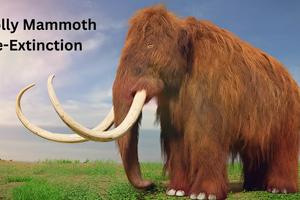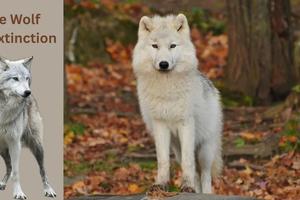Hawaiian Baby Woodrose Seeds: Benefits, Risks & Uses, Psychoactive Properties, Legality, And Safe Consumption Methods

Key Takeaways
Essential insights to remember
Hawaiian Baby Woodrose Seeds contain LSA, a psychoactive compound related to LSD.
They have been used traditionally for spiritual and medicinal purposes.
Side effects include nausea, dizziness, and potential psychological distress.
The seeds are legal in some regions but restricted in others.
Proper dosage and preparation can reduce negative side effects.
Introduction
Hawaiian Baby Woodrose Seeds (Argyreia nervosa) are a unique botanical species known for their medicinal, psychoactive, and ornamental significance. Originally from India and Southeast Asia, this climbing vine has spread to tropical regions like Hawaii, Africa, and the Caribbean. Its heart-shaped leaves and trumpet-like flowers make it popular in gardens, while its seeds have a long history in traditional medicine and spiritual practices.
These seeds contain Lysergic Acid Amide (LSA), a compound related to LSD, which has drawn attention for its hallucinogenic effects. Some people seek them for spiritual experiences and creativity, while others caution against their side effects and health risks. Despite their controversial nature, Hawaiian Baby Woodrose Seeds continue to be researched for potential therapeutic applications and remain a subject of interest in both ethnobotany and modern science.
What are Hawaiian Baby Woodrose Seeds?
Botanical Classification and Origin
Hawaiian Baby Woodrose (Argyreia nervosa) belongs to the Convolvulaceae family, the same group as morning glory. This perennial climbing vine thrives in tropical and subtropical climates, particularly in India, Sri Lanka, and parts of Southeast Asia. Over time, it has been introduced to Hawaii, Africa, and the Caribbean, where it is cultivated for its ornamental beauty and unique properties.
Physical Description of the Plant
🔹 Leaves: Large, heart-shaped, and velvety green
🔹 Flowers: Trumpet-shaped, usually purple or pink with a yellow center
🔹 Seeds: Small, brown, and enclosed in a woody capsule
💡 Did you know? The name "Baby Woodrose" comes from the shape of the seed pods, which resemble tiny wooden roses.
Natural Habitats and Growth Conditions
Hawaiian Baby Woodrose vines flourish in warm environments with plenty of sunlight and well-draining soil. They can grow several meters long, often climbing fences, trellises, or nearby trees. These vines are known for their fast-growing nature, making them a great choice for natural shade and privacy screens in gardens.
Despite being prized for its aesthetic appeal, Hawaiian Baby Woodrose has gained global recognition due to its psychoactive seeds, which are used in traditional medicine and spiritual practices.
Psychoactive Properties and Active Compounds
Understanding Lysergic Acid Amide (LSA)
Hawaiian Baby Woodrose Seeds are known for containing Lysergic Acid Amide (LSA), a naturally occurring psychoactive compound. LSA is chemically related to LSD (Lysergic Acid Diethylamide), but its effects are generally milder and more sedative.
How LSA Affects the Mind and Body
LSA interacts with the serotonin receptors in the brain, altering perception, mood, and thought processes. Its effects can vary based on dosage, preparation, and individual tolerance.
Common Effects of LSA
🌀 Euphoria and relaxation
🌿 Enhanced sensory perception
💭 Deep introspection and spiritual experiences
🎨 Creativity boost and altered thought patterns
However, higher doses can lead to hallucinations, confusion, nausea, and anxiety, making the experience unpredictable.
Comparing LSA with LSD and Other Psychedelics
Many people compare LSA to LSD due to their chemical similarities, but the two substances produce different experiences.
Factors Affecting Potency
The strength of LSA varies based on several factors:
🔹 Seed Age: Older seeds lose potency over time.
🔹 Seed Variety: Hawaiian strains are often stronger than Indian or Ghanaian varieties.
🔹 Preparation Method: Consuming raw seeds may cause nausea, while extraction methods can reduce negative effects.
🔹 Dosage: Effects range from mild relaxation at low doses to strong hallucinations at high doses.
⚠️ Caution: The effects of Hawaiian Baby Woodrose Seeds are unpredictable, and improper use can lead to discomfort or health risks.
Potential Benefits of Hawaiian Baby Woodrose Seeds

Traditional and Medicinal Uses
For centuries, Hawaiian Baby Woodrose Seeds have been used in Ayurvedic medicine and traditional healing practices. Ancient practitioners believed the plant could promote relaxation, improve mental clarity, and enhance spiritual awareness. Today, researchers are exploring its potential in neurological and mental health applications.
Possible Health Benefits
✔️ Stress and Anxiety Relief – LSA’s serotonin-modulating effects may help promote calmness and relaxation.
✔️ Enhanced Creativity and Introspection – Users report deeper thoughts and altered perceptions, potentially boosting creative problem-solving.
✔️ Spiritual and Mystical Experiences – Some cultures use the seeds for meditation, self-discovery, and vision quests.
✔️ Mild Analgesic Properties – The plant’s alkaloids may offer pain relief in traditional medicine.
How LSA Affects the Brain
The psychoactive properties of LSA influence neurotransmitters, particularly serotonin, which regulates mood and cognition. This is why some users experience a sense of peace, heightened emotions, and increased self-awareness.
💡 Did You Know? Some users describe the LSA experience as a mix of dreamlike euphoria and mild sedation, making it distinct from the high-energy effects of LSD or psilocybin mushrooms.
Scientific Interest and Future Research
While anecdotal evidence suggests therapeutic potential, more scientific studies are needed to understand LSA’s full effects. Research on its impact on mental health, creativity, and pain relief is still in its early stages.
⚠️ Important Note: Although these benefits sound promising, Hawaiian Baby Woodrose Seeds are not approved as a medical treatment, and their unpredictable effects make them unsuitable for self-medication.
Side Effects and Health Risks
Common Side Effects
While some people seek Hawaiian Baby Woodrose Seeds for their psychoactive and therapeutic properties, the experience is not always pleasant. Many users report mild to severe side effects, which can vary based on dosage, individual tolerance, and preparation method.
⚠️ Common Side Effects Include:
🚫 Nausea and vomiting – A frequent issue, often caused by the outer seed coating.
🚫 Dizziness and fatigue – Due to LSA’s sedative properties, some users feel extreme tiredness.
🚫 Stomach cramps and bloating – Consuming raw seeds may irritate the digestive system.
🚫 Confusion and paranoia – High doses may trigger mental distress and hallucinations.
Psychological Risks and Hallucinogenic Reactions
LSA’s psychoactive effects can be unpredictable, sometimes leading to anxiety, panic attacks, or paranoia. The trip can feel dreamlike and sedative, but in higher doses, it may cause distorted reality and overwhelming fear.
💭 "The mind is a powerful thing—when altered unpredictably, it can become a source of deep insight or distress."
Physical Health Risks
Some individuals are more vulnerable to the effects of Hawaiian Baby Woodrose Seeds, especially those with pre-existing conditions.
Overdose and Poisoning Symptoms
Excessive consumption of Hawaiian Baby Woodrose Seeds can lead to serious discomfort and potential toxicity.
🚨 Signs of Overdose:
❗ Severe nausea and prolonged vomiting
❗ Uncontrollable muscle tremors
❗ Rapid heartbeat and high blood pressure
❗ Intense hallucinations leading to fear or panic
Precautions and Harm Reduction
✅ Start with a low dose – If using the seeds, begin with one or two seeds to assess tolerance.
✅ Remove the outer coating – This may help reduce nausea and digestive distress.
✅ Never mix with alcohol or other drugs – Combining LSA with depressants or stimulants can lead to dangerous interactions.
✅ Have a trip sitter – If consuming for psychoactive effects, being with a trusted person can help manage unexpected reactions.
⚠️ Warning: Due to these potential health risks, Hawaiian Baby Woodrose Seeds should never be consumed carelessly. Their unpredictable nature makes responsible use and caution essential.
Legality and Ethical Concerns
Legal Status Around the World
The legality of Hawaiian Baby Woodrose Seeds varies depending on the country. While the seeds themselves are often legal to possess, extracting or consuming their psychoactive compound (LSA) may be restricted.
Why Are Some Countries Restricting Hawaiian Baby Woodrose Seeds?
Despite their natural origin, these seeds contain LSA, which has hallucinogenic effects. Some governments view them as a potential substitute for LSD, leading to restrictions similar to other psychedelics.
🚨 Key Reasons for Legal Concerns:
🔹 Potential for misuse – LSA’s mind-altering effects make it a concern for recreational drug use.
🔹 Health risks – Side effects like nausea, paranoia, and cardiovascular strain raise safety concerns.
🔹 Association with illicit substances – Though LSA is not as potent as LSD, it falls under psychedelic regulation in many regions.
Ethical Considerations in the Use of Hawaiian Baby Woodrose Seeds
Many cultures have historically used Hawaiian Baby Woodrose Seeds in spiritual and healing practices. However, modern recreational use raises ethical questions:
💬 Should these seeds be used responsibly for self-discovery, or are they being misused for recreational hallucinations?
💡 Traditional Perspective: Indigenous and Ayurvedic practitioners use these seeds for meditation, healing, and personal insight.
💡 Modern Perspective: Some users consume them purely for their psychoactive effects, sometimes leading to unsafe experiences.
The Gray Area: Legal But Not Recommended for Consumption
Many online retailers sell Hawaiian Baby Woodrose Seeds as "ornamental" or "ethnobotanical" products, stating that they are "not intended for human consumption." This allows them to be sold legally, but consuming them can still violate drug laws in some regions.
⚠️ Final Thought: If considering Hawaiian Baby Woodrose Seeds, always check your local laws, and remember that responsible use is essential to avoid legal and health risks.
How to Use Hawaiian Baby Woodrose Seeds?

Safe Consumption Methods
Hawaiian Baby Woodrose Seeds contain LSA, a psychoactive compound that can produce hallucinogenic effects. However, improper consumption may lead to nausea, dizziness, and other side effects. To minimize risks, users have developed several preparation methods that help reduce toxicity and digestive discomfort.
Common Methods of Consumption
🌀 Chewing the Seeds – The simplest method, but can cause strong nausea due to the seed’s natural toxins.
☕ Cold Water Extraction (CWE) – A safer and more efficient way to extract LSA while reducing side effects.
🥤 Tea Preparation – Soaking crushed seeds in filtered water may reduce the intensity of gastrointestinal discomfort.
💊 Capsule Form – Some users grind the seeds into powder and place them in gelatin capsules to avoid the bitter taste.
Step-by-Step Guide: Cold Water Extraction (CWE)
This method helps reduce nausea and maximize effects while avoiding harmful compounds found in the seed’s outer coating.
1️⃣ Remove the Outer Coating – Scrape off the seed’s husk using a knife or sandpaper.
2️⃣ Grind the Seeds – Crush them into a fine powder using a mortar and pestle or coffee grinder.
3️⃣ Soak in Cold Water – Add the powder to distilled water and let it soak for 12-24 hours.
4️⃣ Strain the Mixture – Use a fine coffee filter or cheesecloth to separate the liquid from the seed residue.
5️⃣ Drink Slowly – Consume the extracted liquid gradually to monitor its effects.
💡 Pro Tip: Using distilled or filtered water is crucial, as tap water may contain minerals that interfere with extraction.
Recommended Dosage for Different Experiences
The effects of Hawaiian Baby Woodrose Seeds vary based on dose, preparation, and individual tolerance.
Tips to Reduce Negative Effects
✔️ Start with a low dose – First-time users should begin with one or two seeds to assess tolerance.
✔️ Prepare on an empty stomach – This can increase absorption and reduce nausea.
✔️ Avoid alcohol and other substances – Mixing LSA with alcohol or stimulants can be dangerous.
✔️ Have a calm environment – The experience can be emotionally intense, so a comfortable setting is essential.
Cautionary Warnings
⚠️ Do not exceed 8 seeds – High doses can lead to intense hallucinations, vomiting, and confusion.
⚠️ Not for pregnant women – LSA can cause uterine contractions and miscarriage risks.
⚠️ Effects last 6-12 hours – Be prepared for a long and potentially unpredictable experience.
🛑 Final Reminder: Hawaiian Baby Woodrose Seeds are not a recreational drug and should be approached with caution and respect. Always research local laws and use them responsibly if legally permitted.
Growing and Cultivating Hawaiian Baby Woodrose
Ideal Growing Conditions
Hawaiian Baby Woodrose is a fast-growing climbing vine that thrives in warm, tropical climates. Whether grown for its ornamental beauty or for its seeds, providing the right environmental conditions ensures healthy growth.
Step-by-Step Planting Guide
1️⃣ Seed Preparation
🔹 Scarification: The outer shell of the seeds is hard and must be scratched or nicked using sandpaper or a knife to help with germination.
🔹 Soaking: Place seeds in warm water for 24 hours to soften the shell and speed up sprouting.
2️⃣ Planting the Seeds
🌱 Choose a Location: Select an area with full sunlight and well-draining soil.
🌱 Plant Depth: Bury the seeds 1-2 cm (0.5 inch) deep in the soil.
🌱 Spacing: Keep at least 30 cm (12 inches) between plants to allow vines to spread.
3️⃣ Watering and Maintenance
💧 Water lightly but regularly to maintain moist soil.
🌿 Add organic compost or mulch to improve soil quality.
✂️ Prune vines to control growth and remove weak stems.
Growth Timeline
Hawaiian Baby Woodrose takes time to establish itself before flowering and producing seeds.
Pest and Disease Management
While relatively pest-resistant, Hawaiian Baby Woodrose vines can attract aphids, spider mites, and fungal diseases.
🦠 Common Issues and Solutions
🐛 Aphids & Spider Mites – Spray with neem oil or insecticidal soap.
🍂 Yellowing Leaves – Check for overwatering or poor soil drainage.
🍄 Fungal Infections – Ensure good airflow and avoid excess moisture.
Harvesting and Seed Collection
🌺 Flowering occurs in late summer, followed by the formation of woody seed pods.
🛠️ When to Harvest: Once the pods turn brown and dry, they are ready for seed collection.
📦 Storage Tip: Keep seeds in a cool, dry place to maintain viability for future planting.
💡 Did You Know? Hawaiian Baby Woodrose can grow up to 10 meters (30 feet) long, making it an excellent natural screen for gardens and fences.
🌿 With the right care, this vine can become a stunning, low-maintenance addition to any garden while producing valuable seeds for ethnobotanical purposes.
Comparing Hawaiian Baby Woodrose Varieties

Different Varieties and Their Unique Traits
Hawaiian Baby Woodrose (Argyreia nervosa) comes in multiple regional varieties, each with different potency, appearance, and effects. The three most well-known varieties are:
🔹 Hawaiian Variety – The most potent and widely sought-after for its high LSA content.
🔹 Indian Variety – Used in Ayurvedic medicine, generally milder in psychoactive effects.
🔹 Ghanaian Variety – Less common, with weaker hallucinogenic properties but still used recreationally.
Key Differences in Seed Potency and Effects
The LSA concentration varies significantly across these varieties, affecting intensity and duration of effects.
Visual and Physical Differences
Even though all varieties belong to the same species, their physical characteristics can help distinguish them.
🔹 Hawaiian Seeds – Dark brown, hard, with a spongy coconut-like outer shell.
🔹 Indian Seeds – Lighter brown, slightly smaller, with a rougher texture.
🔹 Ghanaian Seeds – Soft, dark brown, and often more oval in shape.
💡 Did You Know? The Hawaiian variety is preferred by psychonauts due to its high potency and stronger effects, while the Indian strain is used more traditionally in medicinal applications.
Which Variety is Best for Cultivation?
For those looking to grow Hawaiian Baby Woodrose, the Hawaiian and Indian varieties are the best choices. The Hawaiian strain grows more vigorously in warm climates, whereas the Indian strain is more adaptable to varied soil conditions.
🌿 Best for Gardens? – Indian & Hawaiian (Fast-growing, hardy plants)
💊 Best for Medicinal Use? – Indian (Mild effects, traditional uses)
🌀 Best for Psychoactive Effects? – Hawaiian (Strongest LSA content)
⚠️ Final Note: Regardless of the variety, these seeds should be used responsibly due to their unpredictable effects. Understanding differences in potency can help avoid negative experiences while using them for spiritual, medicinal, or horticultural purposes.
Dangers of Overuse and Poisoning
Recognizing the Risks of Overconsumption
While Hawaiian Baby Woodrose Seeds contain LSA, a natural psychoactive compound, excessive intake can lead to serious physical and psychological distress. Overuse may cause toxicity, paranoia, and severe nausea, making it crucial to understand the safe limits of consumption.
Symptoms of Overdose and Poisoning
Excessive consumption of these seeds can trigger intense and unpredictable reactions, often lasting for 12+ hours.
🚨 Signs of Overdose:
❗ Severe nausea and prolonged vomiting – The body struggles to digest the seed’s alkaloids.
❗ Uncontrollable muscle tremors – High doses may lead to shaking and muscle weakness.
❗ Paranoia and confusion – Users report panic attacks, hallucinations, and extreme fear.
❗ Rapid heartbeat and hypertension – LSA can cause vasoconstriction, leading to high blood pressure.
❗ Loss of motor coordination – Some individuals experience dizziness, heavy limbs, and difficulty walking.
💡 Did You Know? Ingesting more than 10 seeds can cause an extremely overwhelming experience, often accompanied by intense nausea, sweating, and dehydration.
Long-Term Psychological Effects
Repeated or high-dose use of Hawaiian Baby Woodrose Seeds may lead to lasting mental health effects, especially in individuals prone to anxiety or psychosis.
First-Aid and Emergency Response
If someone experiences a bad trip or overdose symptoms, follow these steps:
✅ Stay Calm – Reassure the person that the effects will wear off in time.
✅ Hydrate – Drinking water or electrolyte solutions can help counteract dehydration and nausea.
✅ Create a Safe Environment – Reduce sensory overload by dimming lights and minimizing noise.
✅ Seek Medical Help – If symptoms include chest pain, extreme confusion, or difficulty breathing, call emergency services immediately.
⚠️ Warning: Those with heart conditions, high blood pressure, or psychiatric disorders should never consume these seeds, as the effects can be unpredictable and dangerous.
Safe Use and Harm Reduction
To avoid toxicity and overdose, users should always follow safe practices:
✔️ Start with a low dose (1-2 seeds) to test individual tolerance.
✔️ Use extraction methods to reduce unwanted side effects.
✔️ Never mix with alcohol or other drugs, as this increases the risk of adverse reactions.
✔️ Avoid frequent use to prevent long-term psychological effects.
💡 Final Thought: The dangers of Hawaiian Baby Woodrose Seeds are dose-dependent, and while small amounts may cause mild euphoria, higher doses can result in distressing hallucinations, nausea, and even hospitalization. Responsible use and harm reduction strategies are essential.
Conclusion
Hawaiian Baby Woodrose Seeds are a fascinating yet controversial botanical substance. Revered for their medicinal, spiritual, and psychoactive properties, they have been used for centuries in traditional healing practices and ethnobotanical studies. However, their hallucinogenic effects and health risks make them a subject of caution.
Understanding safe consumption methods, dosage limits, and potential risks is essential for anyone considering their use. While some people seek these seeds for introspection and creativity, others may experience unpleasant side effects, including nausea, paranoia, and confusion. Their legal status varies across regions, adding another layer of complexity to their accessibility.
For those interested in cultivation, Hawaiian Baby Woodrose vines are a beautiful and resilient plant that can thrive in warm climates with proper care. Whether grown for ornamental purposes or seed production, they require full sun, well-draining soil, and regular maintenance.
Ultimately, Hawaiian Baby Woodrose Seeds should be approached with caution and respect. While they hold potential therapeutic and spiritual value, their unpredictable effects and legal ambiguities make responsible use and thorough research a necessity.





